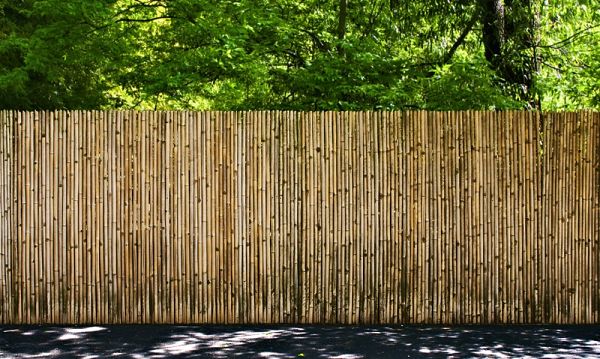All Categories
Featured
Selecting the ideal fencing for your building involves mindful consideration of performance, visual appeals, spending plan, and long-lasting maintenance. Whether you're wanting to improve personal privacy, boost visual charm, or protect your property, understanding your alternatives will certainly help you make an educated choice. Below's a thorough guide to selecting the suitable fencing for your needs.
![]()
Personal Privacy: Tall, solid fences like wood or vinyl are optimal for obstructing visibility. Safety and security: Sturdy materials like light weight aluminum or steel provide a protected barrier. Aesthetic Appeal: Attractive fences, such as wrought iron or picket designs, improve curb charm. Control: For youngsters or pet dogs, fencings like chain-link or plastic are practical options. Sound Decrease: Dense materials, such as composite secure fencing, can aid wet sound. Clearly determining your objectives will narrow down your choices dramatically.
Wood: Uses a natural, timeless look and is highly personalized yet calls for regular upkeep. Plastic: Reduced upkeep and long lasting yet might have a higher preliminary cost. Aluminum: Lightweight, rust-resistant, and elegant, though not suitable for personal privacy. Chain-Link: Economical and practical yet lacks aesthetic appeal and personal privacy. Wrought Iron: Ornamental and resilient yet can be costly and requires upkeep. Composite: A mix of wood and plastic, supplying sturdiness with a wood-like appearance. Choose a product that straightens with your priorities and matches your property's style.
![]()
Low Upkeep: Vinyl, light weight aluminum, and composite fencings require occasional cleaning. Moderate Maintenance: Wrought iron fencings may need repainting to stop rust. High Maintenance: Wood fences need routine staining, sealing, or paint. Take into consideration just how much effort and time you agree to buy maintenance over the years.
A picket fencing fits a typical home. A contemporary building might look ideal with streamlined, minimalist secure fencing materials like plastic or steel. A country building may profit from rustic timber or split-rail fencing. 7. Seek Professional Guidance. Consulting a fence specialist can help guarantee you pick the appropriate material, style, and installment procedure for your home. Experts can evaluate factors like soil environment, incline, and type to recommend the most ideal choices.
Verdict. Selecting the best fencing for your building entails balancing performance, looks, and price. Begin by determining your goals, checking out materials, and thinking about maintenance and budget plan. With thoughtful planning and expert suggestions, you can find the ideal fencing to enhance your residential or commercial property's worth, security, and beauty for several years to find.
- Specify Your Objective. The initial step in choosing a fence is identifying why you need one. Common objectives include:

Personal Privacy: Tall, solid fences like wood or vinyl are optimal for obstructing visibility. Safety and security: Sturdy materials like light weight aluminum or steel provide a protected barrier. Aesthetic Appeal: Attractive fences, such as wrought iron or picket designs, improve curb charm. Control: For youngsters or pet dogs, fencings like chain-link or plastic are practical options. Sound Decrease: Dense materials, such as composite secure fencing, can aid wet sound. Clearly determining your objectives will narrow down your choices dramatically.
- Think About Product Options. Each secure fencing product has unique high qualities, advantages, and downsides. Below's a quick overview:
Wood: Uses a natural, timeless look and is highly personalized yet calls for regular upkeep. Plastic: Reduced upkeep and long lasting yet might have a higher preliminary cost. Aluminum: Lightweight, rust-resistant, and elegant, though not suitable for personal privacy. Chain-Link: Economical and practical yet lacks aesthetic appeal and personal privacy. Wrought Iron: Ornamental and resilient yet can be costly and requires upkeep. Composite: A mix of wood and plastic, supplying sturdiness with a wood-like appearance. Choose a product that straightens with your priorities and matches your property's style.

- Element in Upkeep Needs. Different fence materials need varying levels of care:
Low Upkeep: Vinyl, light weight aluminum, and composite fencings require occasional cleaning. Moderate Maintenance: Wrought iron fencings may need repainting to stop rust. High Maintenance: Wood fences need routine staining, sealing, or paint. Take into consideration just how much effort and time you agree to buy maintenance over the years.
- Evaluate Your Spending plan. Fencing costs include both products and installation. While chain-link and timber are generally much more affordable in advance, products like plastic and aluminum may conserve money in the long run due to decreased upkeep requirements. Additionally, aspect in possible upgrades, such as gates or decorative elements, when establishing your spending plan.
- Examine Neighborhood Laws and HOA Policies. Prior to settling your option, consult regional zoning laws and home owner organization (HOA) regulations. Some areas have height restrictions, product constraints, or style guidelines that may influence your choice.
- Suit the Fencing to Your Home's Design. The style of your fence ought to complement your home and landscape. As an example:
A picket fencing fits a typical home. A contemporary building might look ideal with streamlined, minimalist secure fencing materials like plastic or steel. A country building may profit from rustic timber or split-rail fencing. 7. Seek Professional Guidance. Consulting a fence specialist can help guarantee you pick the appropriate material, style, and installment procedure for your home. Experts can evaluate factors like soil environment, incline, and type to recommend the most ideal choices.
Verdict. Selecting the best fencing for your building entails balancing performance, looks, and price. Begin by determining your goals, checking out materials, and thinking about maintenance and budget plan. With thoughtful planning and expert suggestions, you can find the ideal fencing to enhance your residential or commercial property's worth, security, and beauty for several years to find.
Latest Posts
Reputable Industrial Roof Covering Services by Weathercraft
Published May 25, 25
1 min read
Uncover the Best Auto Repair Coupons in Montclare, Chicago
Published May 23, 25
1 min read
How to Know When Your Car Needs Skilled Car Repair at Montclare Auto Repair
Published May 23, 25
1 min read